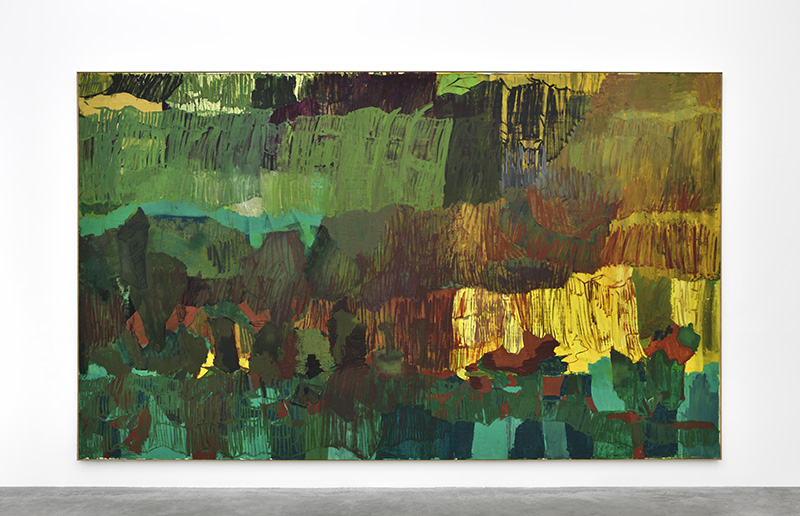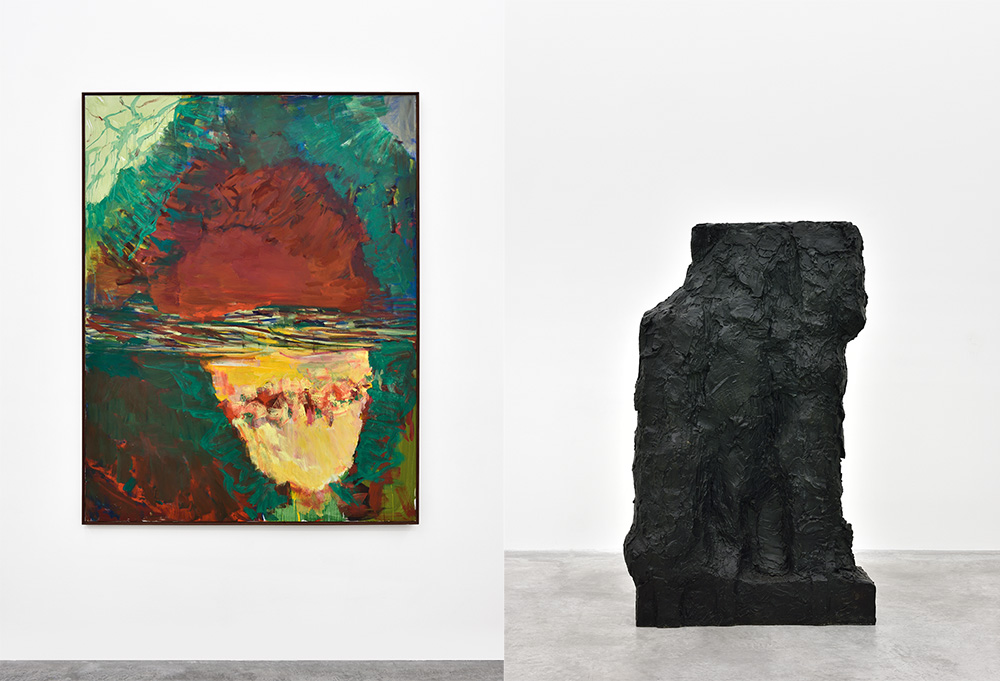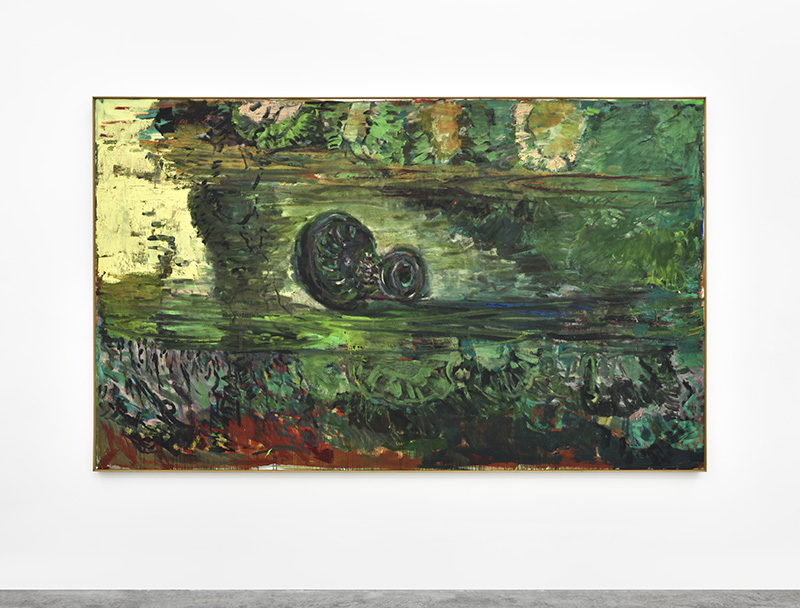ART CITIES:Paris-Per Kirkeby
 Per Kirkeby is not only a leading painter, sculptor and printmaker, but also a prolific writer, poet, and filmmaker. Entrenched in the conceptual understanding of a structure, Kirkeby works within parameters to contain the urgency of abstract mark making. “A structure-less painting is, to me, a painting that does not matter. Structure mirrors your degree of responsibility toward the work” he says.
Per Kirkeby is not only a leading painter, sculptor and printmaker, but also a prolific writer, poet, and filmmaker. Entrenched in the conceptual understanding of a structure, Kirkeby works within parameters to contain the urgency of abstract mark making. “A structure-less painting is, to me, a painting that does not matter. Structure mirrors your degree of responsibility toward the work” he says.
By Efi Michalarou
Photo: Almine Rech Gallery Archive
Equally trained as a geologist and an artist, Per Kirkeby is a painter of eminent sensuality, creating richly layered canvases filled with prodigious detail and animated by an unequaled material quality of color. A monographic exhibition featuring a selection of paintings and bronze sculptures by Per Kirkeby is on presentation at Almine Rech Gallery in Paris. Kirkeby’s paintings are structured like geological strata, constantly in flux, moving and changing, continuously and passionately maintaining a dialogue between art and science. His works incorporate all aspects of natural history, reflecting the artist’s considerable curiosity about the infinite variety of life. Kirkeby likens paintings to “collapsing structures,” a metaphor borrowed from geology. As the Austrian Art Historian and Curator Dieter Buchhart says “Kirkeby emphasizes the color of the material that changes with the light and the power of colors to generate emotions. In works such as “Urwald” from 1988 he sets colors as accents like light as an expression of chaos, for it is only out of chaos that form can “emerge”. His bronze sculptures in the exhibition are fragmented bodies reminiscent of Auguste Rodin’s radicalized torsos, but rooted in a deep dialogue with nature. He reworks these fragments into forms that barely suggest a figure, taking care not to harbor any narrative or anecdotal content. Born in 1938 Per Kirkeby already began studying painting and graphic arts in Copenhagen in 1962, during his studies in geology. After several expeditions to Greenland and a dissertation on Arctic geology, he went public with his artistic work in his first solo shows of the mid-sixties. Fascinated by their utopian visions, Kirkeby took part in the Fluxus movement and played in performances by Joseph Beuys and Charlotte Moorman. And like many European artists, he experienced the American Pop Art Movement as a revelation. Around this time, the artist discovered masonite panels as a painting ground. He uses them as his format for experimentation to this day. The masonite panels were also a flight from the “terror” of the Fluxus artists who were against painting, as Kirkeby later described the zeitgeist of the time in an essay on his former comrade in arms Georg Baselitz. The masonite paintings of the late ’60s and early ’70s look like an extract of his continuous dialogue with painting. The figurative still dominates, but alongside the pop-cultural motifs, nature and the expressive, abstract gesture become fundamental constants and already start emerging into the foreground of his work, becoming condensed in an almost emblematic way in three main motifs: tree, forest, and cabin. Kirkeby’s path led him throughout the 1970s away from Pop quotes and collage techniques to the Peinture pure of oil painting. The representational aspect gradually disappears, the brushstrokes become looser, the formats larger, and art history enters into his painting. Kirkeby positioned himself very consciously in the larger European painting tradition. In 1981, Kirkeby took part in the legendary group exhibition “A New Spirit in Painting” at the Royal Academy in London. His sculptural practice is most often characterized by the brick sculptures that he developed in the mid-70s, yet also includes works in bronze begun in 1981. Closely acquainted with major German Artists of the eighties such as Georg Baselitz, Markus Lüpertz, A.R. Penck, Jörg Immendorff, and Anselm Kiefer, Kirkeby was included in the 1981 exhibition “Malerei in Deutschland” at the Palais des Beaux-Arts de Bruxelles. One year later, Kirkeby experienced the celebration of expressive figuration in the “Zeitgeist” exhibition at Berlin’s Martin-Gropius-Bau He taught successively at the Karlsruhe Kunstakademie and the Städelschule in Frankfurt from 1978 to 1988. Kirkeby represented Denmark in the 1976 Venice Biennale and participated in Documenta VII and IX.
Info: Almine Rech Gallery, 64 Rue de Turenne, Paris, Duration: 3/3-14/4/18, Days & Hours: Tue-Sat 11:00-19:00, www.alminerech.com



